#Claude Fournier
Text


Today I learned that Harry Reems played a by-the-book vice cop named Captain Clean in some obscure Québécois comedy called Hot Dogs AKA Cops and Other Lovers. Anybody seen this?
8 notes
·
View notes
Text

Marc Bohan for Christian Dior Haute Couture Collection Fall/Winter 1967-68. Red wool dress and coat.
Marc Bohan pour Christian Dior Collection Haute Couture Automne/Hiver 1967-68. Robe et manteau en lainage rouge.
Photo Claude Ohm
#haute couture#christian dior#marc bohan#fashion60s#french designer#french style#1967-68#fall/winter#automne/hiver#claude ohm#wool coat#manteau en laine#laine de fournier
10 notes
·
View notes
Text

Jean-Claude Fournier “Le faiseur d'or” Spirou et Fantasio, Journal de Spirou 1639 (1969)
Source
Published cover

7 notes
·
View notes
Text










saltimbank (jean-claude biette, 2003)
17 notes
·
View notes
Text
Nomination Review: Bizu from Bizu
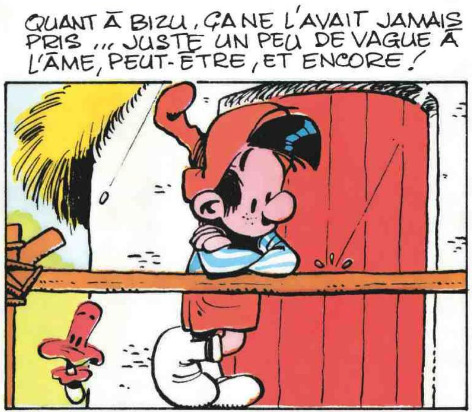
Bizu from Bizu; confirmed in the album "Le Signe D'ys" (note this series is entirely in French and no English translation exists for this album). At the start of the album the book spends a page going on about how every creature in the forest is feeling the power of love/lust in spring and then shows Bizu just standing there going "oh it looks like rain" with a voice over saying "except for Bizu, he's never experienced it. A little melancholy perhaps but even then..." (you can see the page for yourself here in the internet archive:
Just as a note, this album came out in 1986 and does not use the specific word "asexual" so I understand if you disqualify this as not being "canon enough" though I feel the book deliberately pointing out that he doesn't experience sexual attraction while other people do (several of the animals featured are major/recurring characters) pushes it past headcanon territory
Verdict: Accepted
Even if the terms didn't exist yet Bizu is explicitly shown as aro/ace.
I do worry about him getting crushed by more well-known characters (among English speakers) so hopefully there'll be enough obscure characters for him to fairly compete against.
#bizu#bizu comic#long post#Spirou 1967#Jean-Claude Fournier#really wish I knew french because I love this lil dude's design#nomination#canon proof#asexual#aromantic#asexuality in fiction#aromanticism in fiction#asexual representation#aromantic representation#actuallyasexual#nomination review
2 notes
·
View notes
Photo

André Franquin and Jean-Claude Fournier - Original illustration of Gaston Lagaffe for Spirou magazine, c. 1970.
#bd#bande dessinée#spirou et fantasio#champignac#gaston lagaffe#dupuis#planche bd#robbedoed en kwabbernoot#guust flater
61 notes
·
View notes
Text
La Morte

The sick child, 1896 | Edvard Munch (1863-1944, Norway)

Funerale bianco (White funeral), 1901 | Edoardo Berta (1867-1931, Italia)

Autoritratto macabro (macabre self-portrait), 1899 | Carlo Fornara (1871-1968, Italia)

Tombe romane (roman tombs), Concordia (Venice), 1887 | Filippo Franzoni (1857-1911, Switzerland)
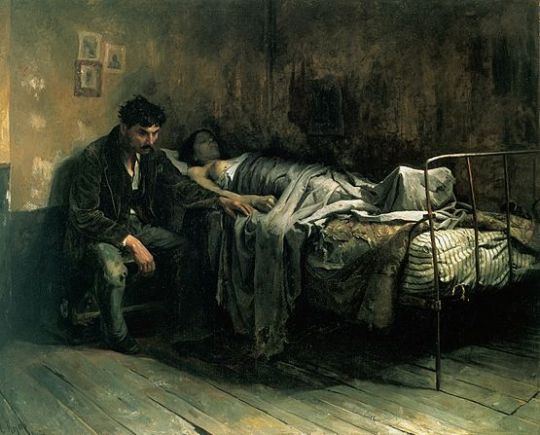
Miseria, 1886 | Cristóbal Rojas (1857-1890, Venezuela)

Böcklin's grave, 1901-02 (Staatliche Kunsthalle, Karlsruhe) | Ferdinand Keller (1876-1958, Germany)

The widow (detail), 1882-83 | Anders Zorn (1860-1920, Sweden)

L’adultera o La femme de Claude, 1877 (Galleria d’Arte Moderna, Torino) | Francesco Mosso (1848-1877, Italia)

The funeral of Shelley, 1889 | Louis Édouard Fournier (1857-1917, France)

La peine de mort | Félicien Rops (1833-1898, Belgium)

Funeral at sea (on the death of the painter David Wilkie), 1842 (Tate Gallery, London) | William Turner (1775-1851, England)

La mort de Marat, 1793 (Musées royaux des Beaux-Arts, Bruxelles) | Jacques-Louis David (1748-1825, France)
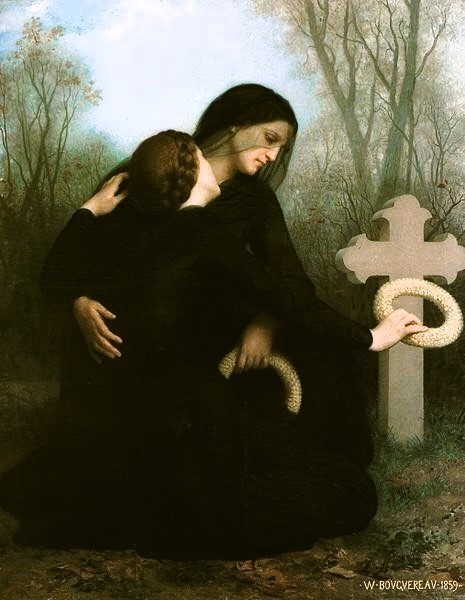
Le jour des morts, 1859 (Musée des Beaux-Arts, Bordeaux) | William Adolphe Bouguereau (1825-1905, France)
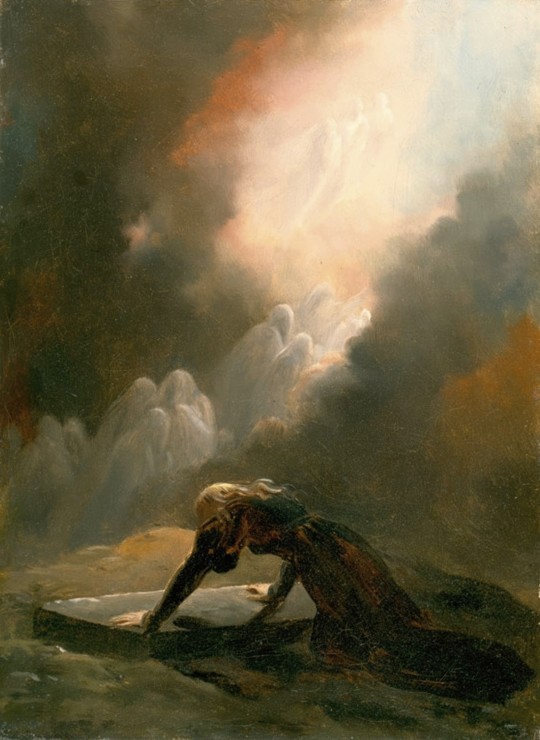
Bradamante at Merlin's tomb, 1820 | Alexandre-Évariste Fragonard (1780-1850, France)

Death on the pale horse, 1865 | Gustave Doré (1832-1883, France)

Il trionfo della morte, 1464 ca. (Palazzo Abatellis, Palermo) | Anonimo

Roman widow | Dante Gabriel Rossetti (1828-1882, England)

Cemetery in the moonlight, 1822 | Carl Gustav Carus (1789-1869, Germany)

The plague, 1898 | Arnold Böcklin (1827-1901, Switzerland)

Ophelia, 1851-52 (Tate Britain, London) | John Everett Millais (1829-1996, England)
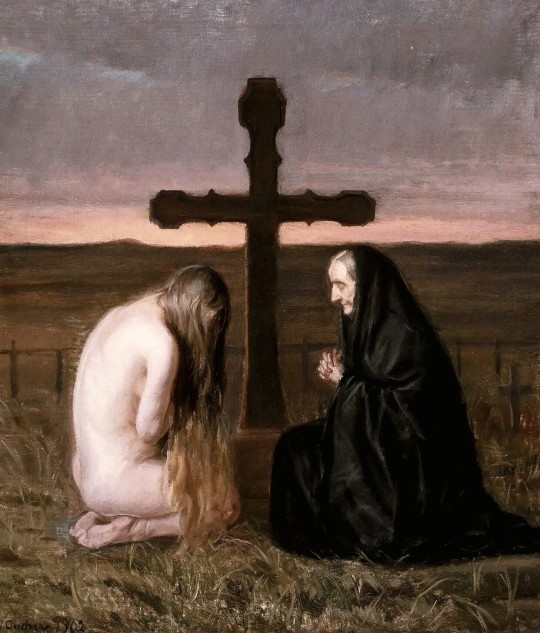
Grief, 1902 | Anna Ancher (1859-1935, Denmark)

The plague of pestilence, portfolio (two of seven etchings), 1920 | Stefan Eggeler (1894-1969, Austria)
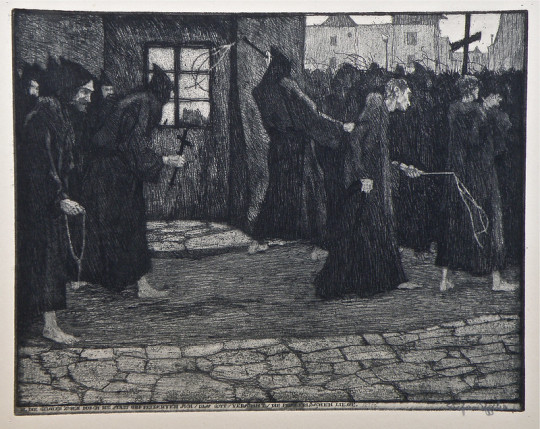
The plague of pestilence, portfolio (three of seven etchings), 1920 | Stefan Eggeler (1894-1969, Austria)

Dr. Nicolaes Tulp's anatomy lesson, 1632 | Rembrandt (1606-1669, Netherlands)

La sepoltura del conte di Orgaz (El Entierro del conde de Orgaz), 1586 (Chiesa di Santo Tomé, Toledo) | El Greco (1541-1614, Greece)

Woman on her deathbed, 1883 (Kröller-Müller Museum, Otterlo) | Vincent van Gogh (1853-1890, Netherlands)

Princess Tarakanova, in the Peter and Paul Fortress at the time of the flood, 1864 | Konstantin Flavitsky (1830-1866, Russia)
4 notes
·
View notes
Text
bored so i'm gonna make a master list of all my ocs with descriptions lol. see the readmore for uh... more! (and please read the tags as there are some triggering implications in some oc descriptions)
bellatrice lane
this story was created by @flareboi! you can see more stuff about it on our shared toyhouse here
elias the witch
age: (physical) 25, (actual) 255
pronouns: he/him (trans)
born in colonial new england, and moved to what would later become new mexico during the revolution. does not know what the united states are.
adachi haru
age: (physical) 34, (actual) 148
pronouns: he/him (cis)
trained samurai, born in korea but lived in mexico city after his mother died. moved to new mexico shortly before his death.
zeyna la cour
age: (physical) 42, (actual) 133
pronouns: she/her (cis)
one of the three fortune tellers, took care of pumpkin while she was living in the circus
sybil clutterbuck
age: (physical) 27, (actual) 127
pronouns: she/her (cis)
an acrobat with terrible body dysmorphia. her ghost form manifests with many wings that she uses to cover her face and body (@mosseatermyla recently drew a wonderful drawing of her, which is the third image in this post!!)
jeanie birdwhistle
age: (physical) 35, (actual) 124
pronouns: she/her (cis)
mother of 5 (iirc), including the former contortionist of the circus. she was also a fortune teller at one point, after zeyna and pumpkin
felix levine
age: (physical) 30, (actual) 109
pronouns: he/him (in a 100% genderqueer way)
animal tamer and catboy, friends with sybil and didi/maxime as well as @fetts-macaroni-art's oc casper.
"pumpkin"
age: (physical) 15, (actual) 106
pronouns: she/her (later switches to they/them)
the youngest part of the fortune teller, former runaway who experienced true prophetic visions.
brindille "didi" auclair / maxime auclair
age: (physical) 25, (actual) 102
pronouns: originally she/her but eventually he/him
jeanie's second youngest child and the former contortionist. their unfinished business is egg-cracking.
théo birdwhistle
age: (physical) 37, (actual) 100
pronouns: he/him (cis)
jeanie's youngest, died in a car accident with his fiancé, claude, and got trapped in the attic of the house. initially unaware that any of his family members are ghosts.
claude shepherd
age: (physical) 35, (actual) 98
pronouns: he/him (cis)
théo's fiancé and local garden ghost. he looks like a gnome and always has plants growing on him.
phillip mclellan
age: (physical) 19, (actual) 56
pronouns: he/him (genderqueer)
former member of a cult in a town next to hapsville, where bellatrice lane takes place. had his own soul exorcised from his body and sent to hell, and he spent almost forty years fighting his way back out, before digging himself out of his own grave. basically possessing his own body, which has been mysteriously frozen in time.
damien lioncourt
age: 15
pronouns: he/him (cis)
species: vampire
he is not aware that he's a vampire. just thinks that he's allergic to garlic and easily sunburnt (this is despite the fact that the rest of his family knows they're all vampires. they just... forgot to tell damien)
f.a.e. (for all eternity)
more information can be seen on the fae website here!
his majesty fechin dune of the dappled forest
age: 25
pronouns: he/him (cis)
species: seelie fae
has a tumblr: @ask-fechin. king of his kingdom, and very very homosexual (married to @reedsaloser's oc knox affean, prince of naranthia)
veronica hippotigris
age: 24
pronouns: she/they
species: elf
courting knox's adopted sibling rowan (who is fechin's half-brother... weird). loves violin.
zemenu/zamir pirags
age: 21
pronouns: she/he (genderfluid but doesn't realize till she starts dressing as a man to hide that her partner is gay)
species: seelie fae
personal bodyguard and best friend of prince oberon fournier of finapor, an island kingdom near naranthia and the dappled forest.
silas waylen
age: 18
pronouns: he/him (cis)
species: seelie fae
son of a disgraced noblewoman from the dappled forest, he's spent his entire life in finapor. twin of siana, and deeply autistic.
siana waylen
age: 18
pronouns: she/her (cis)
species: seelie fae
daughter of a disgraced noblewoman and twin sister of silas. more adhd than autistic, and also missing an arm.
fish cardiff
age: 20
pronouns: he/him (cis)
species: human
technically a witch, but he doesn't like to make that known. son of queen chrysanthemum's (fechin's mother's) first human pet, anton. he lives in the forest between his village and the dappled forest kingdom.
moon woo-yeong
age: 19
pronouns: he/him (cis)
species: unseelie fae
the crown prince of the underdark kingdom of elysium, and one of the two survivors of a terrible carriage accident that killed his father and older sister. he has the power to see auras
myung jong-woo
age: 15
pronouns: he/him (cis)
species: unseelie fae
the younger maternal cousin of the crown prince, and the older son of the head monk of the country's religion. because he didn't inherit the family power of seeing auras, he was passed over for inheriting his father's title in favor of his younger brother, sang-hoon, who he bullies relentlessly.
the house
pavel volkov
age: 120
pronouns: he/him (cis)
species: witch
owns a magickal house with a mind of its own
duncan farwell
age: 119
pronouns: he/him (cis)
species: specialized human
subject of a series of experiements which resulted in him being able to control synthetic magick
lowell cotreau
age: 120
pronouns: he/they
species: human
magick experimenter who accidentally sent himself to the faerie realm, connecting the story of the house to fae. became the last human pet of queen chrysanthemum.
maisy osse
age: 20
pronouns: they/them
species: half-giant
pavel's apprentice and literally the tallest motherfucker you'll ever meet. they have three eyes and my entire heart <3
#arlo's oc tag#for all eternity#fae#bellatrice lane#the house#implied death#implied child death#putting those there just in case lol#religious trauma#buried alive#fictional death#fictional child death
9 notes
·
View notes
Text
Introduction/Who am I?
Okay, so since I’m back on here again in the ongoing exodus, I thought I’d better do an introductory post for anyone who wants to follow as well as refresh old friends and followers. Open to new friendships so feel free to send me asks, reply, or whatever if you want to talk.
Francesca (Fran, Frankie for short)
Englishwoman
Lesbian, f4f
Cat person (see previous bullet)
I enjoy writing although I’m aware I’ll probably never be published so it’s mostly just something I do for my own personal catharsis and expression.
Night owl
Haute couture enjoyer
Learning French (c. B1, B2 reading level), want to learn European Portuguese, Spanish, Latin, Dutch, interested in language acquisition more broadly
I’ve always been a voracious reader so some favourite authors, poets and essayists: Sappho, Gustave Flaubert, Charles Baudelaire, Arthur Rimbaud, Théophile Gautier, Gérard de Nerval, Marcel Proust, Alain-Fournier, Jorge Luis Borges, Camilo Castelo Branco, Yukio Mishima, Jean Genet, Anaïs Nin, Novalis, Simone Weil, Jacques Lacan, Plato, James Joyce, Emily Brontë, Jane Austen, Oscar Wilde, George Orwell, Vladimir Nabokov, John Donne, F. Scott Fitzgerald, Emily Dickinson, Fyodor Dostoevsky. My favourite novel (and maybe favourite work of art full stop) is Madame Bovary.
Cinema is my other great passion and one I’ve spent the last few years particularly delving into - some favourite directors/auteurs: Carl Dreyer, Michael Powell (& Emeric Pressburger), Manoel de Oliveira, Alfred Hitchcock, Howard Hawks, Yasujiro Ozu, Francis Ford Coppola, Brian de Palma, Raoul Ruiz, Douglas Sirk, Josef von Sternberg, Ernst Lubitsch, Erich von Stroheim, F.W. Murnau, Fritz Lang, Claude Chabrol, Éric Rohmer, Jean Renoir, Max Ophüls, Eugène Green, Rainer Werner Fassbinder, Luis Buñuel, Pedro Costa, Luchino Visconti, Val Lewton, Dario Argento, Ingmar Bergman, Nagisa Oshima, Wojciech Has. My favourite film is A Matter of Life and Death (1946).
My favourite actresses: Isabelle Huppert (in love with her), Catherine Deneuve, Sophia Loren, Joan Crawford, Barbara Stanwyck, Susan Hayward, Marlene Dietrich, Isabelle Adjani, Sissy Spacek, Vivien Leigh, Penélope Cruz, Fanny Ardant, Monica Bellucci, Emmanuelle Béart, Sandrine Bonnaire
Favourite music: Erik Satie, Claude Debussy, Serge Gainsbourg, Sergio Mendes, Miles Davis, John Coltrane, Charles Mingus, Herbie Hancock, Ella Fitzgerald, Billie Holiday, Dusty Springfield, Nina Simone, Carpenters, Stevie Wonder, Prince, Kate Bush, Cocteau Twins, Björk, Talking Heads, The Cure, Boards of Canada, Joy Division, New Order, The Velvet Underground, Massive Attack, Portishead, Manic Street Preachers
Also enjoy art/painting, aesthetics, fashion, memes, food and (maybe too much) drink. Lots more that I can’t think of at the moment so maybe a sequel in the future when I feel like being inward-looking again?
#introduction#reference#intro post#language learning#cinema#literature#art#francescaderochefort#about me#language acquisition
9 notes
·
View notes
Text

Claude Mann and Jeanne Moreau in Bay of Angels (Jacques Demy, 1963)
Cast: Jeanne Moreau, Claude Mann, Paul Guers, Henri Nassiet, Conchita Parodi. Screenplay: Jacques Demy. Cinematography: Jean Rabier. Music: Michel Legrand.
A platinum blond Jeanne Moreau, dressed in white, evokes Lana Turner in The Postman Always Rings Twice (Tay Garnett, 1946), though Moreau's Jackie Demaistre is not so lethal as Turner's Cora Smith. Jackie is modeling herself on both Marilyn Monroe and Jacqueline Kennedy, but without Monroe's fragility or the American Jackie's poise. In short, the Jackie Demaistre crafted by Moreau and Jacques Demy is her own woman, and one of film's most memorable. She is a compulsive gambler, whose habit has estranged her from her husband and her small son, but she carries on nevertheless, winning big and losing big, yet somehow surviving even when she bets away her train ticket home -- or more likely, to the next casino. Into her circuit wanders a young bank clerk on his vacation, Jean Fournier (Claude Mann), who has been introduced to the gambling life by a co-worker. Jean thinks gambling is immoral, yet once he gets a taste for it, and more to the point, once he meets Jackie, he flings himself headlong into the life. Unfortunately, although Mann, making his film debut, has a handsome presence, he's unable to make the character into a coherent figure. Sometimes broody, sometimes violent, sometimes philosophical, sometimes just a callow young man with no aim in life, Jean is mostly obsessed with Jackie, who is obsessed with gambling. She returns his affection in her way, which means that he'd better not stand between her and the roulette wheel. She takes up with him because she thinks he brings her luck, and their relationship frays when he doesn't. If Moreau had had someone more compelling than Mann to play against -- one of the hyphenated Jeans, Belmondo or Trintignant, for example -- Bay of Angels might have blown me away. As it is, it's just one of those quintessential French films of the 1960s -- a bit wispy as it comes to plot but full of atmosphere, much of it provided by the casinos of the Riviera and Michel Legrand's score. It has many enthusiastic admirers, but I have a feeling most of the enthusiasm was generated by Moreau, who could always blind one to the defects of her movies.
3 notes
·
View notes
Text
Questões de Filosofia Moderna (PPGFIL, UERJ)

Curso Feminismos Seiscentistas
Professora: Carmel Ramos
Local: PPGFIL/UERJ
Horário: quintas-feiras das 9h às 12h20
Ementa: O curso pretende examinar os discursos feministas desenvolvidos ao longo da assim denominada primeira modernidade filosófica, tomando como base sobretudo autoras e autores da cena francesa. Trata- se de propor uma leitura atenta e posterior discussão dos argumentos presentes tanto na Querela das Mulheres quanto na Querela dos Antigos e dos Modernos, partindo, assim, da interação entre filosofia e literatura. Nessa paisagem conceitual, questões como a defesa da racionalidade das mulheres, da igualdade entre os sexos, do acesso à instrução formal, bem como uma descrição particular da dinâmica das paixões e, por fim, uma crítica ao modelo do casamento, serão analisados com o objetivo de apresentar uma alternativa à certa visão tradicionalmente aceita segundo a igual houve pouca ou nenhuma contribuição de mulheres filósofas e escritoras na confecção daquilo que se entende por modernidade. O curso também tem por intenção refletir sobre a escrita, discutindo a originalidade formal das obras das autoras, as quais frequentemente preferiram apostar em gêneros textuais que não se confundem com o tratado filosófico, tais como a autobiografia, o panfleto, a carta e o romance.
Bibliografia primária
CARDOSO, A. FERREIRA. M.L.R. (org.). Medicina dos Afetos. Correspondência entre Descartes e a Princesa Elisabeth da Boémia. Tradução de Inês Cardoso e Paulo de Jesus. Revisão científica por Adelino
Cardoso e Maria Luísa Ribeiro Ferreira. Oeiras: Celta Editora, 2011.
GOURNAY, M.L.J. “A queixa das damas”. Tradução de Cinelli Tardioli Mesquita e Martha Tremblay-
Vilao. Revista outramargem, v. 5 n. 8 (2018): 1o e 2o Semestres de 2018.
______________. “Igualdade entre homens e mulheres”. Tradução e nota introdutória de Clêmie Ferreira
Blaud. In : Modernos & Contemporâneos, Campinas, v. 4, n. 10., jul./dez., 2020.
______________. Apologie pour celle qui escrit. Œuvres complètes, Tome I, GOURNAY (Marie de), p.
1375-1406. Paris: Classiques Garnier, 2024.
LA BARRE, P. De l’égalité des deux sexes, De l’éducation des dames, De l’excellence des hommes. Édition, présentation et notes par M.-F. Pellegrin. Paris: Vrin, 2011.
LAFAYETTE, M. A Princesa de Clèves. Tradução e introdução de Leila de Aguiar Costa. São Paulo: Edusp, 2010.
______________. La Princesse de Clèves et autres romans. Préface et notices de Bernard Pingaud. Paris : Gallimard, 1972.
Bibliografia secundária
ARAÚJO, C. DEPLAGNE, L. MARINHO, A. (org.). Pequenos Ensaios Sobre Grandes Filósofas. Vol. 4. Campina Grande: EDUEPB, 2024.
BEAULIEU, J.P. “Marie de Gournay ou l'occultation d'une figure auctoriale”. New Series / Nouvelle Série, Vol. 24, No. 2, 2000, pp. 23-34 (12 pages).
______________. “« Moy Traductrice » : le façonnement de la figure auctoriale dans le paratexte des traductions de Marie de Gournay”. Renaissance and Reformation / Renaissance et Réforme, vol. 35, 4, 2012, p. 119–134.
______________. FOURNIER, H. “« Les interests du sexe » : dédicataires féminins et réseaux de sociabilité chez Marie de Gournay”. New Series / Nouvelle Série, Vol. 28, No. 1, 2004, pp. 47-59.
BIRCHAL, T.S. “O Promenoir de M. de Montaigne de Marie de Gournay”. Disponível em: https://germinablog.files.wordpress.com/2020/10/texto-telma-sobre-gournay-1.pdf.
BOLOGNE, J.C. Histoire du mariage em Occident. Mesnil-sur-l’Estrée: Éditions Jean-Claude Lattès, 1995. BROAD, J. Women Philosophers of the Seventeenth Century. Cambridge: Cambridge University Press,
2002.
COSTA, L.A. Antigos e Modernos. A cena literária na França do Século XVII. São Paulo: Nankin : Edusp, 2009.
DEJEAN, J. Tender Geographies. Women and the origins of the Novel in France. New York: Columbia University Press, 1991.
______________. Antigos contra Modernos. As Guerras Culturais e a construção de um fin de siècle. Rio de Janeiro: Civilização Brasileira, 2005.
DEPLAGNE, L.C. “Querelle des femmes: Mapeamento em português”, In: Blogs de Ciência da Universidade Estadual de Campinas: Mulheres na Filosofia, V. 7, N. 2, 2021, p. 28- 42.
______________. MILLER, N.K. (ed.). Displacements. Women, Tradition, Litteratures in French.
Baltimore & London: The Johns Hopkins University Press. 1991.
DORLIN, E. L’évidence de l’égalité des sexes. Une philosophie oubliée du XVIIe siècle. Paris: L’Harmattan, 2000.
DUBOSC-HAASE, D. VIENNOT, E. Femmes et pouvoirs sous l’ancien régime. Paris: Éditions Rivages, 1991.
. “Intellectuelles, femmes d'esprit et femmes savantes au XVIIe siècle”. Clio [En ligne],
EBBERSMEYER, S. HUTTON, S. (ed.). Elisabeth of Bohemia (1618–1680): A Philosopher in her Historical Context. Springer, 2021.
FERRARO, A. R.. “Querela das Mulheres, Igualdade e Direito à Educação: França, 1399 a 1793”. Educação & Realidade, 46 (Educ. Real., 2021 46(3)), 2021.
GOURDE,, S. “Écriture contre parole. Marie de Gournay et son autodéfense dans Apologie pour celle qui escrit”. Tangence, n. 77, 2005, p. 61–72.
GRANDE. N. Le roman au 17ème siècle: L'exploration du genre. Mesnil-sur-l'Estrée, Bréal, 2018. HABERT, M. “La relation au savoir d’une femme du début du XVIIe siècle”. Genre & Éducation, édité par
Paul Pasteur et al., Presses universitaires de Rouen et du Havre, 2009.
Cartesian Women: Versions and Subversions of Rational Discourse in the Old Regime. Ithaca:
KEEBLE, N.H. The Cultural Identity of Seventeenth-Century Woman. A reader. London: Routledge, 1994. Élisabeth de Bohême face à Descartes : deux
philosophes ?
KONTIC, S.Z. “Autoridade, paixão e a igualdade dos sexos em Poulain de la Barre”. Revista Seiscentos.
Vol. 1, n. 1, 2021, p. 19-39.
MATTOS, E. I. “O discurso feminista no cartesianismo de Poulain de la Barre”. Griot: Revista de Filosofia, [S. l.], v. 19, n. 3, p. 338–349, 2019.
OFFEN, K. “
O’NEILL, E. “Disappearing Ink: Early Modern Women Philosophers and Their Fate in History”.
KOURANY, J.A. (ed.). Philosophy in a Feminist Voice. Princeton: Princeton University Press, 1998.
______________. “Women Cartesians, ‘Feminine Philosophy’ and Historical Exclusion”. BORDO, S. (ed.). Feminist Interpretations of René Descartes. University Park, PA: Pennsylvania State University Press, 1999.
OSTROWIECKI, H.B. “Ignorant and intractable”. Elisabeth in her Letters to Descartes”. Arts et Savoirs, 6,
2016.
13, 2001.
DUGGAN, A.E. Salonnières, Furies, and Fairies. The Politics of Gender and Cultural Change in Absolutist
France. Newared: University of Delaware Press, 2021.v
HARTH, E.
Cornell University Press, 1992.
KOLESNIK-ANTOINE, D. PELLEGRIN, M.-F. (ed.).
. Paris : Vrin, 2014.
Sur l'origine des mots « féminisme » et « féministe »”. Revue d’Histoire Moderne &
Contemporaine Année 1987, 34-3, pp. 492-496.
PAL, C. Republic of Women: Rethinking the Republic of Letters in the Seventeenth Century. New
York/Cambridge: Cambridge University Press, 2012.
PELLEGRIN, M.F. “Poulain de la Barre: Un féminisme philosophique”. In : POULAIN DE LA BARRE, F. De l’égalité des deux sexes, De l’éducation des dames, De l’excellence des hommes. Paris: Vrin, 2011, pp. 11–48.
_____________. “La ‘Querelle des femmes’ est-elle une querelle? Philosophie et pseudo-linéarité dans l’histoire du féminisme”. Seventeenth-Century French Studies, 35:1, 69-79, p. 70-71, 2013.
_____________. “La science parfaite: Savants et savantes chez Poulain de la Barre”. In: Revue philosophique de la France et de l’étranger, 138(3), 2013, 377–392.
______________. (org.). Poulain de la Barre. Égalité, Modernité, Radicalité. Paris : Vrin, 2017. RAMOS, C.S. “Elisabeth da Bohemia: epistolografia e escrita de filósofas mulheres”. Blogs de Ciência da
Universidade Estadual de Campinas. Mulheres na Filosofia, V. 6 N. 10, 2020, p. 14-30.
______________. “Poulain de la Barre: feminismo lógico e préciosité”. Cadernos De Ética E Filosofia
Política, 42(2), 84-100, 2023.
ROVERE, M. (org.). Arqueofeminismo. Mulheres Filósofas e Filósofos Feministas. Séculos XVII-XVIII.
São Paulo: n-1, 2019.
SÁNCHEZ, A.V. e DURÁN, J.S.. “Los precedentes de la Querelle des Femmes en la poesía románica medieval: las trobairitz”. Voces masculinas y feministas entre Italia y Europa en las Querelle des Femmes, Volumina. pl, 2018, pp. 11-26.
SCHURMAN, A.M. Whether a Christian Woman Should Be Educated and Other Writings from Her Intellectual Circle. Edited and Translated by Joyce L. Irwin. Chicago & London: The University of Chicago Press, 1998.
SHAPIRO, L. “Some Thoughts on the Place of Women in Early Modern Philosophy”. ALANEN, L. WITT, C. (ed.). Feminist Reflections on the History of Philosophy, pp. 219-250. Netherlands: Kluwer Academic
Publishers, 2004.
STANTON, D. “Autogynography: The Case of Marie de Gournay’s Apologie pour celle qui escrit”. French
Litterature Series, Vol. 12, p. 18-31, 1985.
______________. (ed.). The Female autograph : theory and practice of autobiography from the tenth to the
twentieth century. Chicago : University of Chicago Press, 1987.
STUURMAN, S.
______________. François Poulain de la Barre and the Invention of Modern Equality. Cambridge, MA: Harvard University Press, 2004.
WILSON, K.M. WARNKE, F.J. (ed). Women writers of the seventeenth century. Athens: University of Georgia Press, 1989.
“L’égalité des sexes qui ne se conteste plus em France. Feminism in the seventeenth
century”. AKKERMAN, T. STUURMAN, S. (ed.). Perspectivers on Feminist Political Thought in
European History. From the Middle Ages to the Present. London: Taylor & Francis e-Library, 2003.
ZIRBEL, I. “As Obras de Marie Le Jars de Gournay”. Disponível em: https://germinablog.files.wordpress.com/2020/09/as-obras-de-marie-de-gournay.pdf
_____________. “Provar algo não significa convencer o público: lições de pensadoras ‘feministas’ do século XVII”. Cadernos De Ética E Filosofia Política, 39(2), 190-202, 2021.
0 notes
Text












Todos tenemos un gemelo - François Brunelle
1-. Valerie Carreau y Jean-Phillippe Royer
2-. Yves Megert y Remi Bacon
3-. Danielle Boucher y Jovette Desamrais
4-. Edith Prefontaine y Stefanie Tremblay
5-. Frederick Hryszyn y Justin Ford
6-. Jean Vachon y Jacques-Dominique Landry
7-. Marcel Stepanoff y Ludovic Maillard
8-. Marie Chantal y Nancy Paul
9-. Nathaniel y Edward Toledo
10-. Remy Girard y Gabriel Guibert
11-. Sarah Fournier y Alan Madill
12-. Stéphane Morin y Claude-Simon Langlois
0 notes
Video
youtube
3 Hafta Yazı Karakterlerinin Kategorizasyonu (TİPOGRAFİ 2.Dönem Test Sor... Sorularla Öğrenelim Tipografi II 3. YAZI KARAKTERLERİNİN KATEGORİZASYONU Soru 1: Yazı karakteri seçiminde üzerinde düşünülmesi gereken hangi olgu önemlidir? (Çoktan Seçmeli) Estetik Uygunluk Okunurluk Okuturluk ✔ Hepsi Soru 2: Hangisi yazı karakterlerinin en genel sınıflandırma başlıkları arasında yer almaz? (Çoktan Seçmeli) Hümanistik Fontlar Klasik Fontlar ✔ Pi Fontları Çağdaş Fontlar Çizgisel Fontlar Soru 3: ‘Trajan,’ ‘Neuland,’ ‘Augustea,’ ‘Block,’ ‘Exocet’ ve ‘Mason’ fontları hangi yazı karakterleri sınıflandırma başlığının örnekleri içinde yer alır? (Çoktan Seçmeli) ✔ Kazıma Fontlar Geçiş Dönemi Fontları Elyazısı Fontları KalınTırnak Fontlar Hiç biri Soru 4: Hangi yazı karakterleri sınıflandırma başlığı Venedik Eski Biçemi geometrisi temelindeki bir yapıya sahiptir? (Çoktan Seçmeli) Dijital Fontlar Grafik Fontlar Gotik Fontlar ✔ Hümanistik Fontlar Yabancı Fontlar Soru 5: ‘Bodoni’ ve ‘Didot’ gibi geç 18. Yüzyıl fontları hangi yazı karakterleri sınıflandırma başlığı altında yer alır? (Çoktan Seçmeli) Grafik Fontlar ✔ Çağdaş Fontlar Dijital Fontlar Çizgisel Fontlar Hiç biri Soru 6: Geç 16. Yüzyıl’da Claude Garamond ile erken 18. Yüzyıl’daki William Caslon’ın hurufatları hangi yazı karakterleri sınıflandırma başlığı altında yer alır? (Çoktan Seçmeli) ✔ Klasik Fontlar Hümanistik Fontlar Geçiş Dönemi Fontları Kalın Tırnak Fontlar Çağdaş Fontlar Soru 7: Latin abecesi dışındaki dillere ait Arapça, Yunanca, Kiril, Devanagari, Çince, Japonca ve İbranice vb. gibi font türleri hangi yazı karakterleri sınıflandırma başlığı altında yer alır? (Çoktan Seçmeli) Çizgisel Fontlar Grafik Fontlar Dijital Fontlar ✔ Yabancı Fontlar Pi fontları Soru 8: Bilgisayar teknolojisinin etkilerini içeren font tasarımları hangi yazı karakterleri sınıflandırma başlığı altında yer alır? (Çoktan Seçmeli) Hümanistik Fontlar Klasik Fontlar ✔ Dijital Fontlar Çağdaş Fontlar Kalın Tırnak Fontlar Soru 9: Tam olarak ne eski biçem ne de eşit-en geometrisi temelinde olmayan ’Fournier,’ ‘Baskerville,’ ‘Bell,’ ‘Caledonia’ ve ‘Columbia’ gibi fontlar hangi yazı karakterleri sınıflandırma başlığı altında yer alır? (Çoktan Seçmeli) Hümanistik Fontlar ✔ Geçiş Dönemi Fontları Çağdaş Fontlar Kalın Tırnak Fontlar Çizgisel Fontlar Soru 10: Harf dizgisi ölçüsünün seçimindeki olgu veya etkenler içinde hangisinin daha belirleyici olduğu söylenebilir? (Çoktan Seçmeli) Yazı karakteri İzleyici veya Okur Dizgi örneği Konum ✔ Hepsi Yazı Karakteri Seçimi Yazı karakterlerinin geniş seçim olanağı sunması “tek doğru” bir karakter seçimini zorlaştırmaktadır (bk. Görsel 2). Her yazı karakterinin tasarım anlayışı ve/ya da sayfada ürettiği etki herkes tarafından önceden bilinemeyebilir ve tasarıma bağlı olarak üreteceği dışa vurum görülemeyebilir. Bu nedenle yazı karakteri seçiminde estetik, uygunluk, okunurluk ve okutabilirlik üzerinde düşünülmesi gerekir. 20. yüzyılın modernist tasarımında en sık kullanılmış, böylelikle tanınmış ve geçerli olmuş yazı karakterlerinden bir kısmı -birbirine göre ölçü ve etki farklarının görülebilmesi için-burada aynı puntoda kendi adıyla dizilmiş olarak gösterilmiştir Uygunluk (Appropriateness): Seçilen yazı karakteri bir kimliğe sahiptir ama o aynı zamanda uygun olmalıdır. Okur ya da izleyicilerce kabul edilebilir olmalı ve ürünle bütünleşebilmelidir. Göz önünde bulundurulması gereken bir diğer etken ise olası dizgi kopyasının uzunluğudur. Birçok süslü yazı karakteri -ki belki bir ya da iki sözcük için uygun olabilir, ama- bir metin bloğu için uygunsuz olabilecektir. Okunurluk (Legibility): Yalnız estetik açıdan hoşnut edici bir yazı karakteri yeterli değildir, üstelik okunur da olmalıdır. Kimi zaman okunurluk yalnızca bir harf ölçüsü (puntosu) sorunudur ve çalışmanın daha büyük olarak bir harf ölçüsü içinde dizilmesi aracılığıyla iş düzeltilebilir. Bazı yazı karakterlerinin diğerlerinden daha kolay okunur olması yazı karakteri tasarımının en önemli ayırt edici niteliğidir. Tırnaklı yazıların (harfler arasında oluşturduğu boşluk ve uzamsal gerilimden dolayı) daha okunur bir boşluk düzeni oluşturduğu göz önünde bulundurulabilir. Düz metin dizgilerinde tırnaksız yazılara göre eski biçem temelli ancak küçük harf boyu yeniden düzenlenmiş (örneğin, ‘Times New Roman’ gibi) yazılar daha yüksek okunurluk sağlar Okuturluk (Readability): Okuturluk, okunurluktan farklıdır. Bu kavram yalnız yazı karakterini içermez. Üstelik ölçüde, puntoda, sayfa sınırlarında (margins), kağıt seçimi ve benzeri her düzenleme etkeninin nasıl olduğunu içerir. Bir başka deyişle, her şeyin hoşnut edici bir okuma yaratmasıdır. Okunurluk yazı karakteri ve harf ölçüsüne bağlı iken okuturluk bütün tasarımda temellenir
0 notes
Text
Fournier ha avuto una vita di sogni ed espone da Maghen a Parigi
http://www.afnews.info segnala:
In un fumetto autobiografico con la prefazione di Emmanuel Lepage che fu suo allievo, Jean-Claude Fournier racconta gli aneddoti che finora aveva riservato alla sua famiglia e ai suoi amici. Scopriamo in modo molto chiaro e con piacere i segreti di un grande nome del fumetto che sono molto simili […]
Vedi il resto su Ligne Claire…

View On WordPress
0 notes
Text

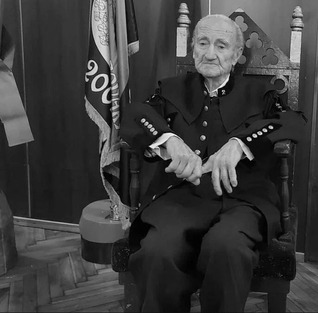






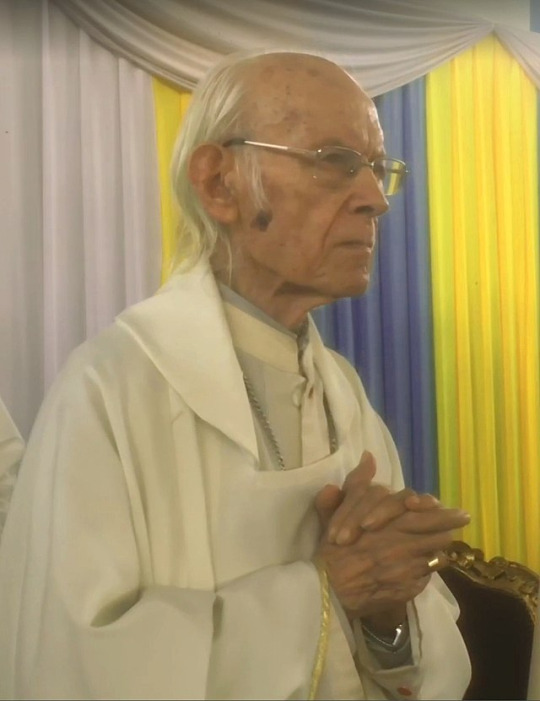


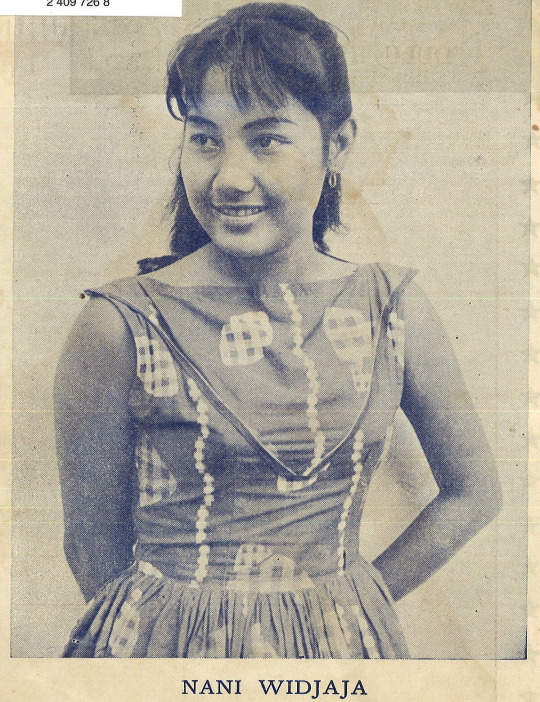







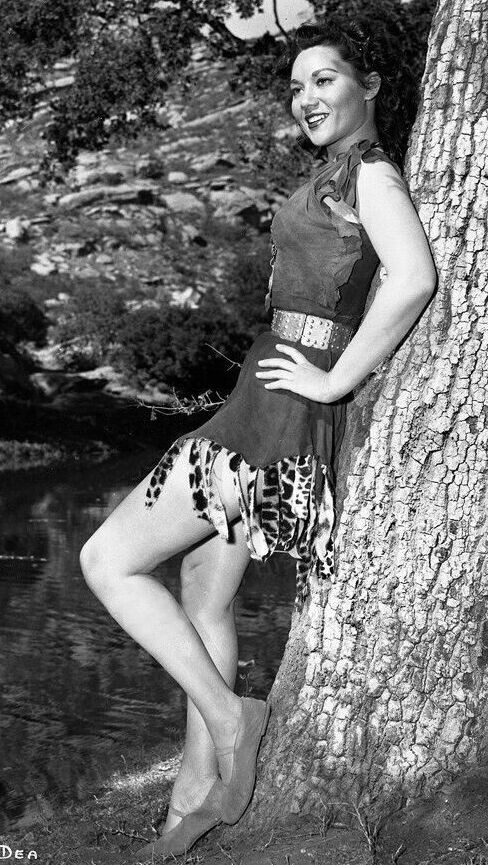



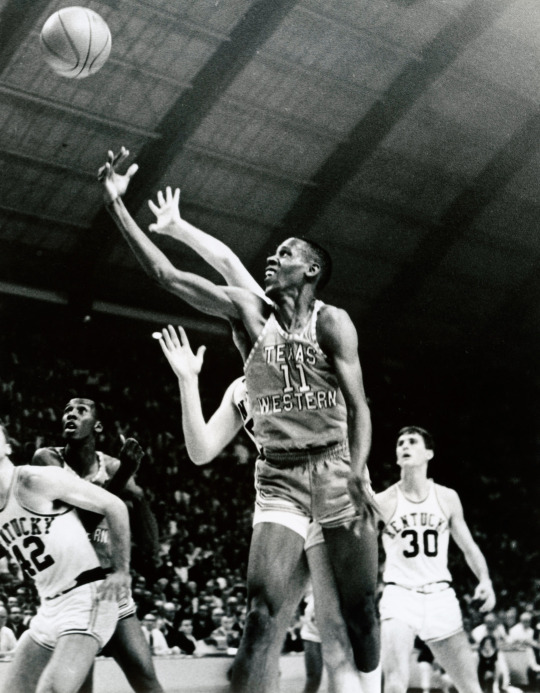






2023 In Memoriam Part 13
Jim Gordon, 77
Karol Mikuláš, 100
Glen Weir, 71
Bishop Ángel Floro Martínez, 83
Antonina Uccello, 100
Jeff Gaylord, 64
Norman Steinberg, 83
Bishop Victor Ocampo, 71
Bishop José Francisco Moreira Dos Santos, 94
Sharon Acker Elkington, 87
Claude Fournier, 91
Nani Widjaja, 78
Rocío Dibildos aka Laura Valenzuela, 92
Don Burgess, 76
Lance Reddick, 60
Gen. Robert W. Sennewald, 93
Ray Solari, 95
Col. Guy Troy, 100
Archbishop Joseph Powathil, 92
Gloria Anzalone aka Gloria Dea, 100
Mozart Mimms, 104
Dr. Steven Ungerleider, 73
Dorothy Wilkinson, 101
Willie Cager; Jr., 80
Mike Kadish, 72
John Linebaugh, 67
Marisol Malaret, 73
Bob Wolfe, 76
Jaigbade Alao, 120
Dave Gardner, 70
#Religion#Tributes#Celebrities#Music#Slovakia#Sports#Football#Canada#Ontario#Spain#Zimbabwe#Politics#Connecticut#Fights#Ohio#Colorado#Movies#New York#TV Shows#The Philippines#Portugal#Angola#Quebec#Indonesia#Hockey#Washington#Maryland#Missouri#Virginia#Races
0 notes
